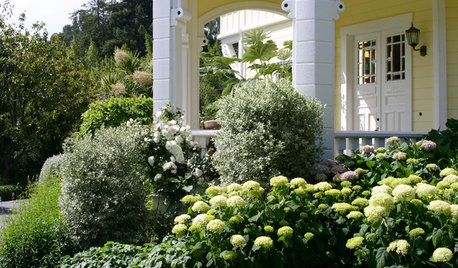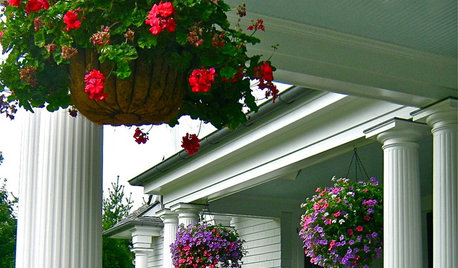Liquid soil conditioners
stan6
15 years ago
Related Stories

MOST POPULAR5 Ways to Hide That Big Air Conditioner in Your Yard
Don’t sweat that boxy A/C unit. Here’s how to place it out of sight and out of mind
Full Story
GARDENING GUIDESThe Poop Scoop: Enrich Your Soil With Good Old Manure
Get over the ick factor already — this natural super-ingredient for soil has so many benefits, you'll wonder why you ever went chemical
Full Story
FARM YOUR YARDHow to Get Good Soil for Your Edible Garden
The nutrients in your soil feed the plants that feed you. Here are tips on getting it right — just in time for planting season
Full Story
GARDENING GUIDESHow to Stop Worrying and Start Loving Clay Soil
Clay has many more benefits than you might imagine
Full Story
GARDENING GUIDESHouzz TV: Make a Worm Bin for Rich Soil and Happy Plants
A worm-powered compost bin that can fit under a sink turns food scraps into a powerful amendment for your garden. Here’s how to make one
Full Story
GARDENING GUIDESGet on a Composting Kick (Hello, Free Fertilizer!)
Quit shelling out for pricey substitutes that aren’t even as good. Here’s how to give your soil the best while lightening your trash load
Full Story
GARDENING AND LANDSCAPINGHave a Ball With Hydrangeas
Even if you don't tinker with the hue by changing the soil, hydrangeas have an entertaining range of uses in all kinds of landscapes
Full Story
GARDENING GUIDESLearn the Secret to Bigger and Better Roses
Grow beautiful roses using both ordinary and unusual soil amendments
Full Story
DECORATING GUIDESImprove Your Style Fortune With Lucky Bamboo
Serve this versatile plant straight up or with a twist for auspicious living decor that thrives without soil
Full Story
PORCHESGet the Hang of Hanging Flower Baskets
Learn all about container materials, soil and designing a hanging flower arrangement for a bountiful look on your porch or deck
Full StorySponsored






bpgreen
soccer_dad
Related Professionals
Barrington Hills Landscape Architects & Landscape Designers · Ferndale Landscape Architects & Landscape Designers · Grand Haven Landscape Architects & Landscape Designers · Stamford Landscape Contractors · El Segundo Landscape Contractors · Hawthorne Landscape Contractors · Homewood Landscape Contractors · Red Oak Landscape Contractors · Severna Park Landscape Contractors · Camp Springs Landscape Contractors · Chicago Driveway Installation & Maintenance · Redford Driveway Installation & Maintenance · Madison Fence Contractors · Carmichael Fence Contractors · Orange County Fence Contractorsstan6Original Author
decklap
Kimmsr
stan6Original Author
bpgreen
nandina
decklap
maplerbirch
Kimmsr
stan6Original Author
Kimmsr
rdak
ronalawn82
williea
jbrooks_myshoes2_com
Kimmsr
joelhar
Kimmsr
joelhar
Kimmsr
joelhar
sc77 (6b MA)
joelhar
sc77 (6b MA)
Kimmsr
sc77 (6b MA)